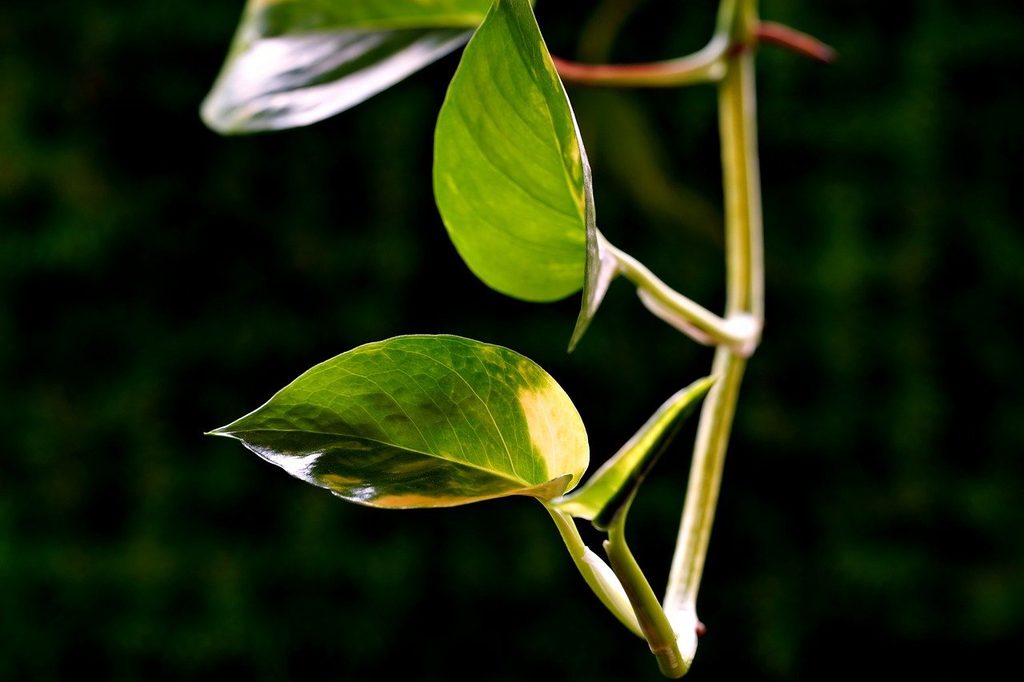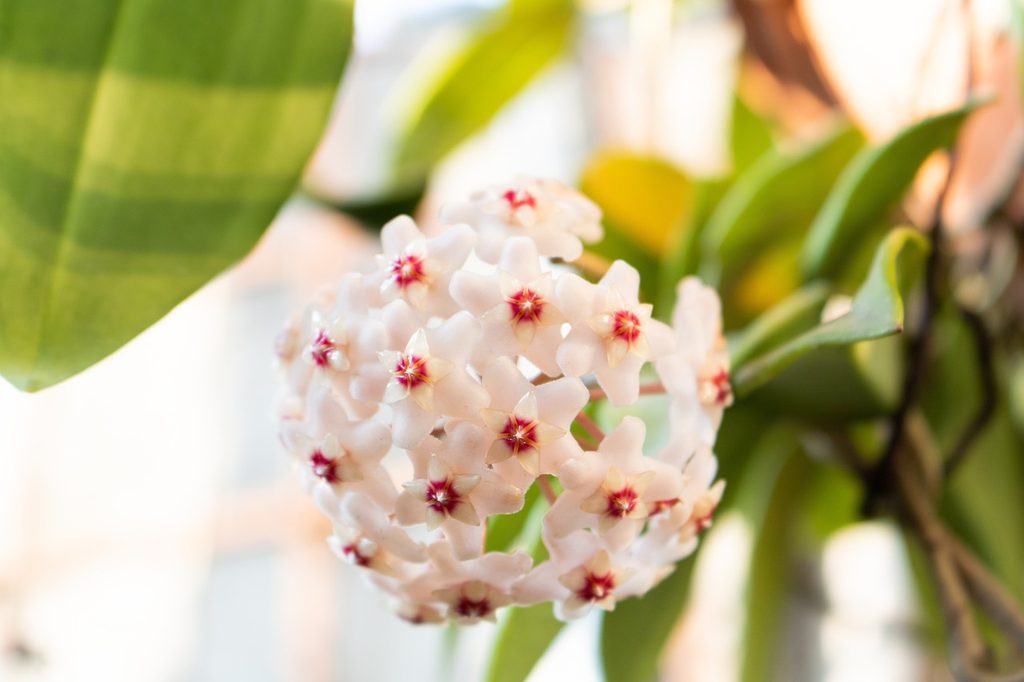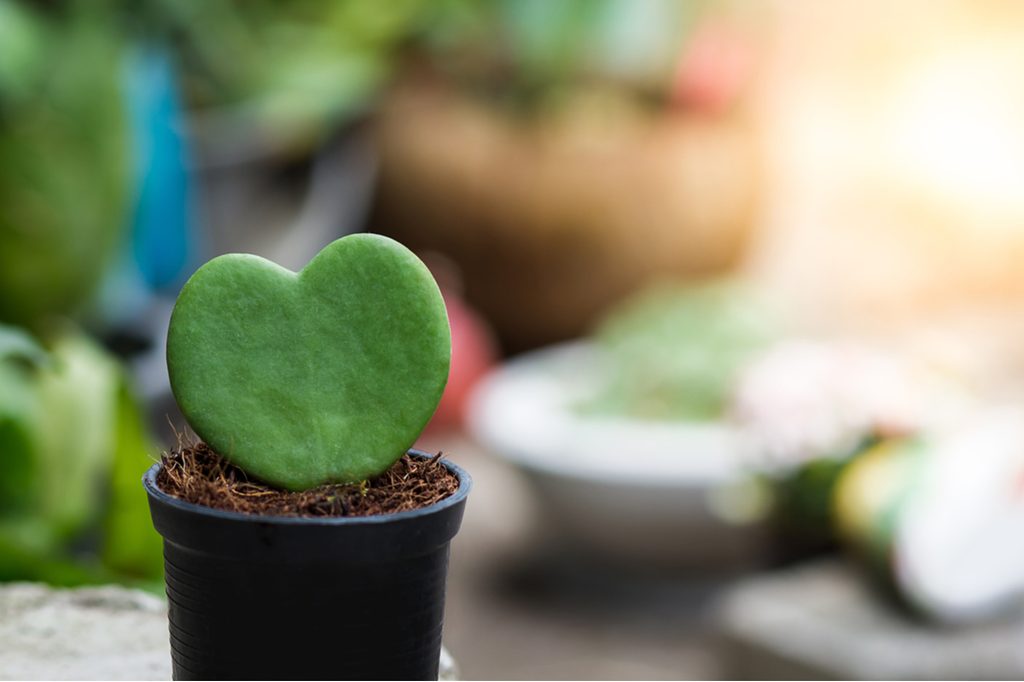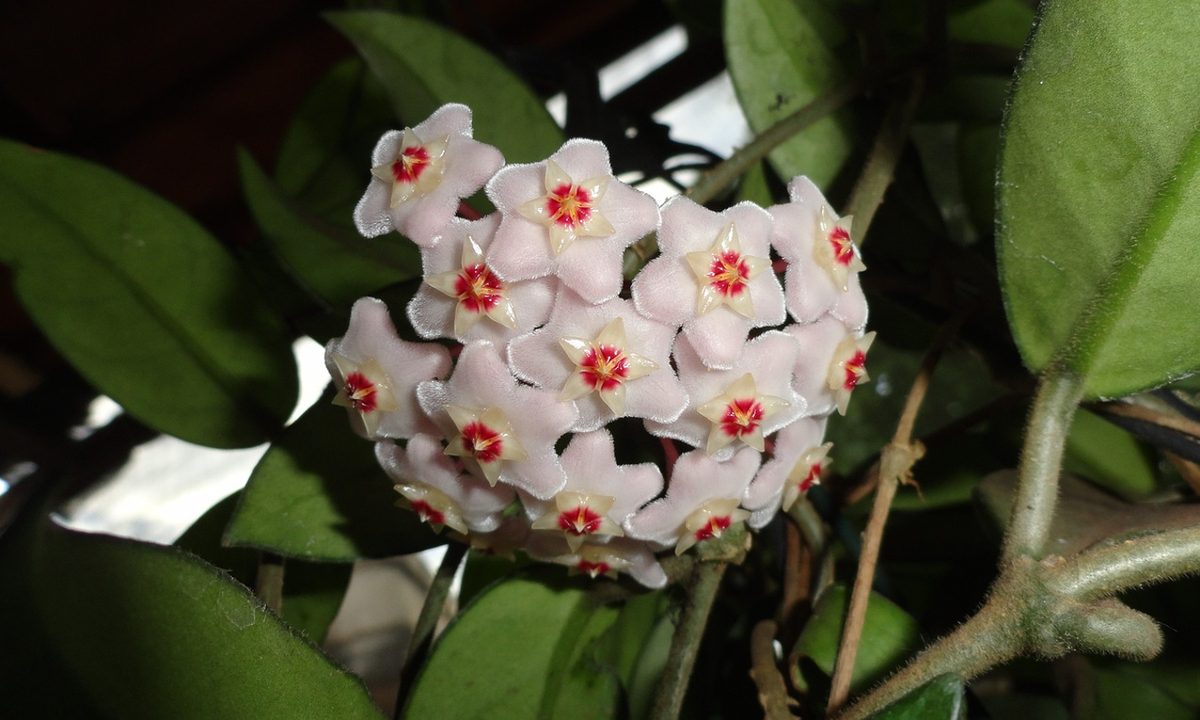Whether it’s a pothos in your office or a philodendron in your dorm room, indoor plants are a fun and easy way to add greenery and color to any environment. If you’re looking for a new plant to add to your houseplant collection, why not try growing a hoya plant? Also called wax plants or wax flowers, these gorgeous plants are known for their glossy leaves and unique clusters of tiny, fuzzy flowers. They’re fairly easy to grow, so here’s everything you need to know about hoya plant care to get started!
Planting hoya plants

Hoya plants prefer light, well-draining soil. A mix of cactus soil and regular potting soil works well, but some gardeners prefer to use a bark-based soil, like the kind commonly used for orchids. Choose a container with plenty of drainage holes to avoid excess water building up in the soil.
Place your hoya in bright, indirect light. Too much direct sunlight can cause leaf scorch, so place your hoya near, but not directly in front of, a sunny window. You can move your hoya outdoors during warm weather, but be sure to keep it in a shaded or sheltered location. While indoors, avoid placing your hoya near a draft or air vent, as the dry, cold air can weaken it.
Hoya plant care

Hoya plants need regular watering, but they are also sensitive to overwatering. Let the soil dry out mostly or entirely before watering your hoya plant. Depending on the temperature and humidity of your home, this typically means watering your hoya once every one to two weeks. Hoya plants also enjoy moderate to high humidity, so regular misting helps keep them fresh and perky.
During the spring and summer, fertilize your hoya plant regularly with a balanced houseplant fertilizer. Some gardeners prefer to use a hoya-specific fertilizer or a fertilizer specifically designed for flowering plants.
Pruning or trimming your hoya in spring helps control its growth, and you can even use the cuttings to propagate it! Use a pair of sharp, clean scissors or shears, and remove a few inches of stem where necessary. You can place The cut section can in water or soil to grow roots; just remember to remove any leaves that are below the water or soil level.
Pests and problems

Hoya plant can become the target of common household pests, such as aphids, spider mites, scale, and whiteflies. If these become a nuisance, insecticidal soap or neem oil can treat them. These pests are more commonly found in dry air, so keeping the humidity up and misting your hoya will help.
Leaf scorch and sunburns are common on hoya plants that receive too much direct sunlight. These look like brown or black patches on the leaves that line up with where the sun shines during the hottest parts of the day. Move your hoya plant and remove any heavily scorched leaves.
Hoya plants can also develop fungal infections, such as root rot, if they are overwatered. Proper hoya plant care will help you avoid this. Make sure the soil is dry before you water your hoya, and use well-draining soil and a container with drainage holes. If your hoya does develop problems from overwatering, repotting it in fresh, dry soil is helpful.
Hoya species to consider

There are many gorgeous hoya plant species and varieties to choose from. Here are a few of our favorites!
- Hoya kerrii: This hoya plant is also called heart hoya or sweetheart plant, is a popular Valentine’s gift for gardeners. With its heart-shaped leaves, hoya kerrii is a small and sweet-looking plant excellent for desks and window sills alike.
- Hoya carnosa: This is one of the most common hoya species available, but that doesn’t mean it’s bland or boring. There are many interesting varieties of hoya carnosa available, including variegated or colorful ones. It’s also more widely available than other hoya species, making it a good choice for beginners.
- Hoya kentiana: If you want something a little more unusual, try hoya kentiana. This hoya has long, skinny leaves that are shaped a bit like bean pods. Available in solid-colored and variegated varieties, hoya kentiana is great for hanging baskets.
- Hoya retusa: If even hoya kentiana is too normal for you, you’ll love hoya retusa. The vines and leaves of this hoya plant are thin and angular, creating a unique and sometimes chaotic display. The leaves stick up at odd angles, causing the plant to resemble a strange shrub, patch of grass, or tumbleweed.
Hoya plants are easy to care for and beautiful to see. Whether you want a classic hoya like hoya carnosa or prefer the more wild appearance of a hoya retusa, this plant has something to offer everyone. With proper care, you can even see them flower! These pink, white, or yellow flowers are lovely and unique, so they’re sure to brighten up practically any room.



